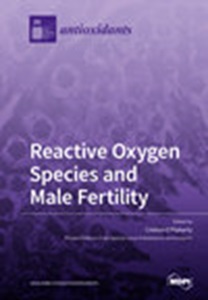Phlorotannin Alleviates Liver Injury by Regulating Redox Balance, Apoptosis, and Ferroptosis of Broilers under Heat Stress
IF 6
2区 医学
Q1 BIOCHEMISTRY & MOLECULAR BIOLOGY
引用次数: 0
Abstract
Heat stress (HS) poses a great challenge to the poultry industry by inducing oxidative damage to the liver, endangering the health and production of broilers. As an important type of seaweed polyphenols, phlorotannin has been shown to have antioxidant properties. The present study evaluated the protective effects of dietary phlorotannin on HS-induced liver injury in broilers based on oxidative damage parameters. A total of 108 twenty-one days old male Arbor Acres plus (AA+) broilers were randomly divided into three groups: TN group (thermoneutral, 24 ± 1 °C, fed with basal diet), HS group (HS, 33 ± 1 °C for 8 h/day, fed with basal diet), and HS + phlorotannin group (HS + 600 mg/kg phlorotannin). Each group has six replicate cages with six birds per cage. The feeding experiment lasted 21 days. At the termination of the feeding experiment (42 days old), samples were collected for analysis of morphological and biochemical features. The results showed that HS decreased the liver index, serum albumin (ALB) content, hepatic antioxidant enzymes activities of catalase (CAT), total superoxide dismutase (T-SOD), glutathione S-transferase (GST), and glutathione peroxidase (GSH-Px) (p < 0.05), while increasing the hepatic histopathology score, apoptosis rate, and malondialdehyde (MDA) content (p < 0.05) in 42-day-old broilers. Compared with the HS group, dietary phlorotannin improved the activities of antioxidant enzymes (GST and GSH-Px) but decreased the histopathology score and apoptosis rate in the liver (p < 0.05). Moreover, HS down-regulated hepatic mRNA expression of CAT1, NQO1, HO-1, and SLC7A11 (p < 0.05), while up-regulated hepatic mRNA expression of Keap1, MafG, IκBα, NF-κB P65, IFN-γ, TFR1, ACSL4, Bax, and Caspase-9 (p < 0.05). Compared with HS group, dietary phlorotannin up-regulated hepatic mRNA expression of Nrf2, CAT1, MafF, GSTT1, NQO1, HO-1, GCLC, GPX1, TNF-α, Fpn1, and SLC7A11 (p < 0.05), while down-regulated hepatic mRNA expression of IκBα, Bax, Caspase-9, and TFR1 (p < 0.05). In conclusion, dietary supplementation of 600 mg/kg phlorotannin could alleviate HS-induced liver injury via regulating oxidative status, apoptosis, and ferroptosis in broilers; these roles of phlorotannin might be associated with the regulation of the Nrf2 signaling pathway.绿丹宁通过调节热应激下肉鸡的氧化还原平衡、细胞凋亡和铁突变减轻肝损伤
热应激(HS)会诱发肝脏氧化损伤,危及肉鸡的健康和生产,从而对家禽业构成巨大挑战。作为一种重要的海藻多酚,绿单宁已被证明具有抗氧化特性。本研究根据氧化损伤参数评估了膳食中的绿单宁对 HS 诱导的肉鸡肝损伤的保护作用。将108只21日龄雄性Arbor Acres plus(AA+)肉鸡随机分为三组:TN组(中温,24 ± 1 °C,与基础日粮一起饲喂)、HS组(HS,33 ± 1 °C,8小时/天,与基础日粮一起饲喂)和HS + 氯丹宁组(HS + 600 mg/kg氯丹宁)。每组有六个重复笼,每个笼有六只鸟。饲喂实验持续 21 天。饲喂实验结束时(42 天),收集样品进行形态和生化特征分析。结果表明,HS 降低了 42 日龄肉鸡的肝脏指数、血清白蛋白(ALB)含量、肝脏抗氧化酶活性过氧化氢酶(CAT)、总超氧化物歧化酶(T-SOD)、谷胱甘肽 S 转移酶(GST)和谷胱甘肽过氧化物酶(GSH-Px)(p < 0.05),同时提高了肝脏组织病理学评分、细胞凋亡率和丙二醛(MDA)含量(p < 0.05)。与 HS 组相比,膳食绿单宁提高了抗氧化酶(GST 和 GSH-Px)的活性,但降低了肝脏组织病理学评分和细胞凋亡率(p < 0.05)。此外,HS 下调了 CAT1、NQO1、HO-1 和 SLC7A11 的肝 mRNA 表达(p < 0.05),而上调了 Keap1、MafG、IκBα、NF-κB P65、IFN-γ、TFR1、ACSL4、Bax 和 Caspase-9 的肝 mRNA 表达(p < 0.05)。与 HS 组相比,膳食绿单宁可上调肝脏中 Nrf2、CAT1、MafF、GSTT1、NQO1、HO-1、GCLC、GPX1、TNF-α、Fpn1 和 SLC7A11 的 mRNA 表达(p < 0.05),而下调肝脏中 IκBα、Bax、Caspase-9 和 TFR1 的 mRNA 表达(p < 0.05)。总之,膳食补充 600 mg/kg 的绿单宁可通过调节肉鸡的氧化状态、细胞凋亡和铁变态反应来减轻 HS 诱导的肝损伤;绿单宁的这些作用可能与 Nrf2 信号通路的调节有关。
本文章由计算机程序翻译,如有差异,请以英文原文为准。
求助全文
约1分钟内获得全文
求助全文
来源期刊

Antioxidants
Biochemistry, Genetics and Molecular Biology-Physiology
CiteScore
10.60
自引率
11.40%
发文量
2123
审稿时长
16.3 days
期刊介绍:
Antioxidants (ISSN 2076-3921), provides an advanced forum for studies related to the science and technology of antioxidants. It publishes research papers, reviews and communications. Our aim is to encourage scientists to publish their experimental and theoretical results in as much detail as possible. There is no restriction on the length of the papers. The full experimental details must be provided so that the results can be reproduced. Electronic files and software regarding the full details of the calculation or experimental procedure, if unable to be published in a normal way, can be deposited as supplementary electronic material.
文献相关原料
| 公司名称 | 产品信息 | 采购帮参考价格 |
|---|
 求助内容:
求助内容: 应助结果提醒方式:
应助结果提醒方式:


